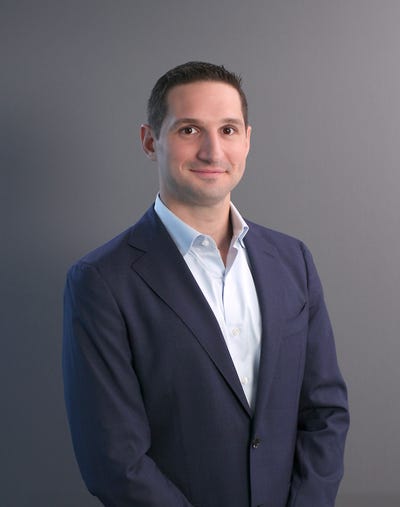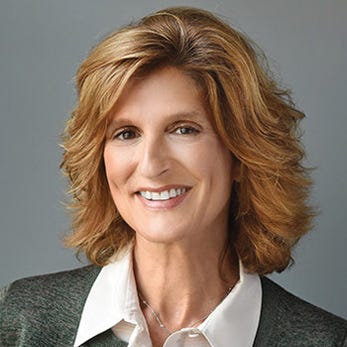Celebrating Independence: Different Perspectives on How to Achieve Greater Freedom and ControlCelebrating Independence: Different Perspectives on How to Achieve Greater Freedom and Control
Independence in the wealth management industry is much like your local ice cream shop—there are many different flavors to choose from.

Each year around July 4, we pause to reflect on the tremendous progress that our industry has made in transitioning, supporting, and fostering independent advisors. But independence in the wealth management industry is a lot like your local ice cream shop—there are many different flavors to choose from.
The central tenets are the same regardless of the path you take, such as ownership over equity and data, the freedom and control to grow and serve clients without limitation, autonomy over the day-to-day running of the business, etc. But going from A to B (that is, from a captive employee model to independence) takes on many different shapes and sizes. And that’s what is so exciting about the current landscape.
Every advisor, regardless of firm or model, wants more freedom and control—but there is no “one size fits all” solution to satisfy this desire.
In other words, independence means different things to each advisor.
Illustrating those differences requires looking only as far as the many advisors we have interviewed on our podcast over the years—a proverbial front-row seat to the first-hand stories of some of the best advisors in our industry. No two advisors are the same, each extraordinary in their own right.
And we’ve called upon the wise words of our founding fathers to help introduce each:
Group 1:
“Give me liberty or give me death!” – Patrick Henry
These are the purists: Those who believe that true independence means having your own RIA and working directly with a third-party asset custodian to set it up. These advisors might outsource some compliance or back-office functions, but for the most part, they handle everything in-house—from the tech stack to marketing to investments. Dan Katz, Managing Partner of Revolve Wealth Partners, and Terry Cook, Managing Partner of Parcion Private Wealth, explain why they opted to forgo a support platform or service partner in favor of the “do-it-yourself” model.
“We felt that we were business-oriented enough that we would be remiss if we didn’t get so far into the details to really understand what was under the hood,” Katz said. “We felt that if we didn’t, we would’ve looked back and wished we had tried to do it on our own….So it felt very natural for us to take on the heavy-lift, uncover every stone, really do the diligence.”
Cook says: “At the end of the day, we really wanted to do it on our own. That’s not for everybody.”
Cook is spot on. The advisors in this bucket typically know early on that they possess an entrepreneurial spirit and are undaunted by owning and operating a business.
Group 2:
“Tell me and I forget. Teach me and I remember. Involve me and I learn.” – Ben Franklin
These are the advisors who enjoy many of the elements of owning and running a business but feel true DIY independence is a bridge too far. They have no interest in managing compliance, middle- and back-office functions, or putting toner in the copy machine. They want to focus exclusively on client service, prospecting, and growth. And what is perhaps most exciting about the modern landscape is the proliferation of service providers and platforms that were born to support the breakaway advisor. Firms like Sanctuary Wealth Partners, LPL Strategic Wealth Services, and Dynasty Financial Partners are examples of these. They provide varying degrees of transition and ongoing support in exchange for a fee or revenue override. However, at the end of the day, the advisor still owns their equity and data and operates their own independent business.
One such advisor is Josh Brown, Managing Partner of NorthEnd Private Wealth, who broke away from Merrill with the support of LPL Strategic Wealth Services.
Said Brown, “[What really resonated is the idea] that we build it and they run it… The thing that stuck with us the most was the support that they could provide on that platform. In return for [the fee we pay to LPL], we get, in my opinion, a lot of stuff… We have a virtual admin, a CMO, a CTO, CFO, Compliance Officer, Operations manager.”
Lizzie Evans, Managing Partner of Evans May Wealth, is another who chose the supported independence route, launching her own independent business with the support of Sanctuary Wealth Partners.
“Ultimately, Sanctuary was undeniably the right fit for us,” she said. “I think from our standpoint, going fully independent would have been a huge lift. I think you don’t know what you don’t know. And while our size would lend itself to being our own RIA, we really believed a fully independent model would dilute our client experience and investment discipline, and that was something we weren’t willing to sacrifice.”
Group 3:
“Liberty cannot be preserved without general knowledge among the people.” – John Adams
These are the advisors for whom the RIA world is too great a leap. For them, the world of the independent broker/dealer is a much better fit. They value the community, scaffolding, and support that comes with having everything under one roof. One such advisor is Jon Kuttin, CEO of Kuttin Wealth Management (one of the largest independent businesses on the Ameriprise Financial platform).
Kuttin explains why he opted to stay with Ameriprise rather than establish his own RIA, stating, “There is absolutely everything on the shelves and in the ecosystem to do an unbelievably good job for your clients. [And] Most importantly, to me, the culture is amazing.”
Chip Munn, Managing Partner at Signature Wealth Strategies, is another excellent example of the IBD advisor. Munn and his team went independent with Raymond James Financial Services in 2016.
“Things like the ability to market, the ability to have inorganic growth, a solid technology platform, and one that we felt like there was a commitment to investing in that would allow for continuing improvement,” he said.
To be sure, these advisors still have the independent spirit and desire to run their own business. Still, they recognize the benefits of the added scaffolding and support that a broker/dealer provides.
Of course, there are other flavors of independence; the above case studies are illustrative examples of just some of the exciting possibilities out there. If greater independence is your goal, there is likely a path to achieve it that will feel soulful, authentic, and most suitable for you and your pursuit of life, liberty, and happiness.
About the Authors
You May Also Like









